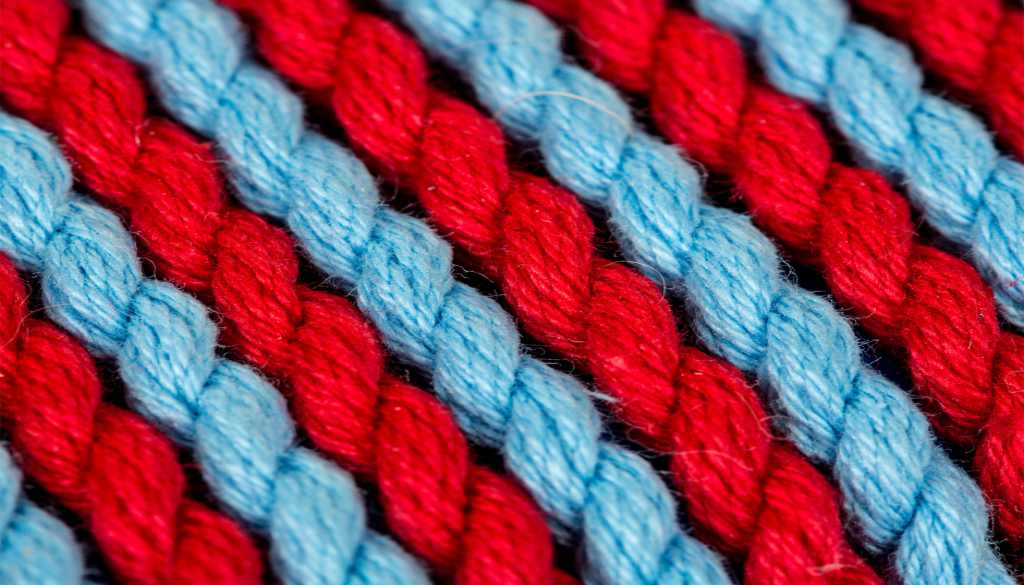
Twistin' the Yarn all Day! Yeah!
Share
Have you ever noticed the swirling bumps and ridges in your yarn, or even perhaps split the yarn as you were working on a project? That’s because you're probably working with a yarn that is constructed with singles or plies.
( Psst! Hi, there! Hop on over here to read all about ply. )
The plies are twisted together to actually build your yarn based on how the designer wants that yarn to look and behave once it has been made into fabric. They accomplish this by using different types of twists each affecting the yarn fibers in different ways. Twists are named “S” or “Z” because of the diagonal you see in each of these letters. Nifty!
Twists that are created by spinning a length of fibers to the right take on a diagonal that moves from the upper left to down to the lower right called an “S” twist. Twists that are created by spinning a length of fibers to the left take on a diagonal that moves from upper right to lower left called a “Z” twist.
All this is fine and well, right? But you are probably wondering, “What’s it got to do with my fine fiber fabric?” (Say that 10 times fast!)
Well, along with other factors such as draft, fiber, weight and ply, twist plays in important role in how your yarn behaves. In other words, how stitches lay in your fabric. Let’s take a closer look at twist and you’ll see what I mean.
So, we said there are “S” and “Z” twists used in creating yarn. Great!
“So…why is that?” you ask.
Twists are used to hold individual fibers together building strength in each single. Single plies are spun one way, usually in a “Z” twist. When singles are spun together they are usually twisted the opposite way, or in an “S” twist. Twisting in the opposite direction adds balance and strength to the strand not to mention weight! But get this! That’s not the end of the story!
In addition to the direction of the twist, the amount of tension placed on the fibers in each twist also matters. As you can imagine, the tighter a strand is twisted the more densely packed the individual fibers become; the denser the fibers, the thinner the strands and the shorter each twist. The less tension, the looser the twist and visa versa. You get the idea.
It all has to do with the force that is generated through twisting. This force holds the plies together. Each ply forms a bump or “angle” in the twist. The less forces applied to the fibers , the looser the twist. The looser the twist the longer the angle.
By now it is easy to see there are so many variables at play. Each one influencing the properties the finished yarn will have.
The level of compactness, or tension, on the fibers in all of the various twisted plies that are used to make your yarn determines characteristics of that yarn. In other words, how springy or sleek it is. How bumpy or smooth. Even which way the yarn twists when you make stitches!
Okay, so how does twist play a role in your everyday yarn choice? Consider the project you want to make. If you want to make a beautiful shawl with a lovely smooth drape you would want to choose a yarn that is of a looser twist, than say, a sock yarn. This is because you want your stitches to stay open when you make them. A yarn with a tight twist and high springiness may shrink your stitches. You could, of course, open the stitches during blocking, but over time the stitches could shrink back requiring you to re-block. Kind of high maintenance…unless you mean for that to happen. We all like what we like, right?
On the flip side, a tightly twisted, springy yarn will add elasticity to your fabric. This is what will help those socks stay up!
Those are not the only considerations related to twist, though. Twist has an impact on the look of your individual stitches, too. Same goes for your knitting or crochet style!
You see, as you work with the yarn the twist of the plies can tighten or loosen as you go changing the overall look of your project. Because of its twist, the yarn may want to lean one way or other within your stitches. In other words, each side of the stitch can slant evenly resulting in a very balanced stitch. Or the twist could cause the angle to be tighter on one side of your stitch than the other resulting in a slight tilt to the stitch. There’s nothing wrong with the yarn or YOU, it’s just how the forces of the twist cause the yarn to lay. Pattern designers use this to their advantage. The effects can be stunning!
The tension and twist will impact different fibers in different ways. The end result is that some yarns have a tight bumpy twist, others a more fluffy look, well, the possibilities are endless. This is why we get lost in all the offerings at your LYS. But with a little knowledge we can understand our yarn and patterns better, which leads to better results! That will certainly make us happier and more confident in our art!
Now that we have a handle on the forces of twist, let’s consider weight of the yarn...
See ya there!
XO
Linda
Shop our yarns!
Check out some of our other topics: yarn draft, fibers, gauge, needles, twist, ply and weight
How Much Yarn Do I Need?
Why avocado?
Breaking down your yarn needs
Our origin story
My yarn journey
